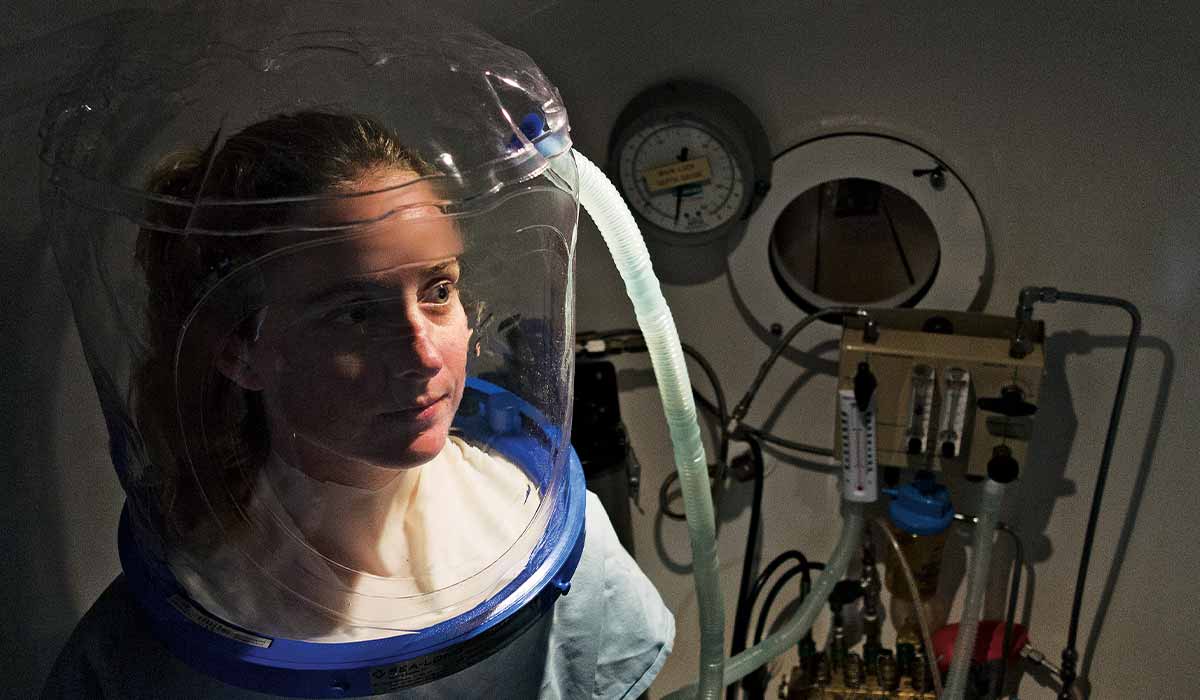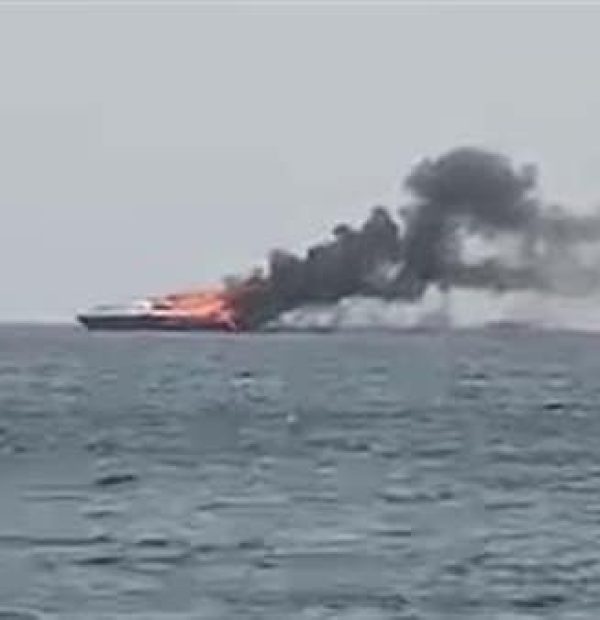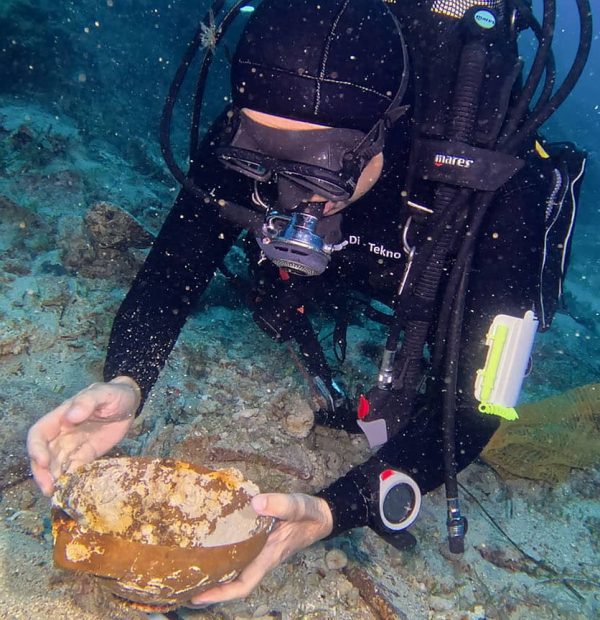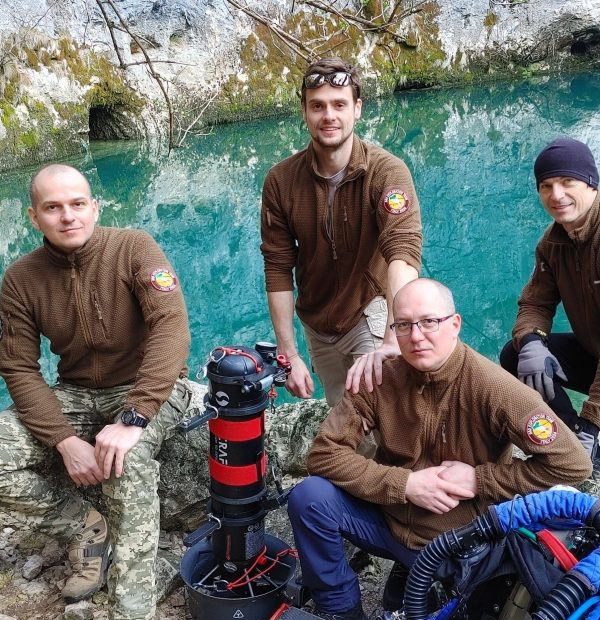Monday, 22 April 2024
Menu

I am inside a submarine-looking chamber watching Little Miss Sunshine projected on the curve wall and feeling nauseous and dizzy, I lay flat on a stretcher and I feel colder and colder although I am covered by more than one blanket. I am wearing an Oxygen mask so tight it has already left purple bruises under my eyes during the two previous sessions. Hopefully, this will be the last one, in part because I feel quite ill inside the chamber, but also because I don’t have symptoms of DCS anymore.

I got bent three days ago during a routine two-tank day that started like every other day. Anything unusual? Asks the doctor. Nothing. Are you feeling tired? I respond: I am a scuba Instructor, I am always tired. I had been volunteering with the local Reef brigade after the anchor of a ship was dropped on a reef in my hometown. Having trained in reef survey and restoration and being an active member of the diving community, I was always on call for these types of incidents. If hands were needed, I would be there, even if my family was celebrating a special event and everyone had gathered for a garden party. I would be joining after the dives.
I had never heard of someone getting bent, I knew what it was but didn’t know how commonly occurring these incidents were. On that day, I conducted two 60-minute dives to 15m/50ft, with an interval of 60 minutes as well. Most people on the team ( a group of at least 12 volunteers) conducted the same two dives, with some of them conducting a third bounce dive for equipment recovery or additional last-minute needs. We all dove air, had computers and did safety stops. I knew the dive site well, and the profile was very standard, we stayed at 15m the entire dive until we ascended to the stop.
On the day of the incident, I remember drinking plenty of water before the dive and during the interval but it was quite a hot day in August. It was also the last day of diving for me after 10 days. Immediately after the dives I joined my family for the celebration, it was approximately two hours after the end of the last dive when sitting in the garden I started feeling an itch on the upper leg, near my bum. I remember thinking that I was being stung by mosquitoes but after a few minutes the itch began to be unbearable so I thought I was having a skin reaction to something. For a second I thought the saltwater could have irritated my skin and I hadn’t showered after the dives, so I headed to the bathroom in one of the rooms hoping to be able to rinse. When I entered, I tried using a mirror to check the itch, which by this time felt like a burn. The skin was extremely hot and I saw small blotches of a slightly different color. The texture of the skin had also changed. Then it hit me. This was DCS.

I placed a call to get the opinion of someone close to me. I tried taking photos and even a video call but the angle was difficult and the light didn’t help.
I felt trapped because outside were 55 people waiting to make a toast and I was salty from the ocean, with what I thought was DCS, and with no one to be able to consult in person.
The hesitation was nerve-wracking, should I say something? Should I leave without letting anyone know? Should I call my parents and explain running the risk of everyone panicking as they were non-divers?
I decided to call my mom on the side and explain that I thought I had a mild version of DCS. I called a local dive shop and asked them to lend me an O2 tank, I drove there and they opened the shop for me so I could pick it up on the way to the clinic which was 35 minutes away. As I got out of the car to get the cylinder, my leg hurt enough to give me a limp. At this point, I could not walk properly and my mother decided to take the wheel while I lay down on the passenger seat breathing O2.
I also called the chamber to let them know I was coming. Upon arrival, a doctor who did not seem to know much about diving took my initial report of the events and questioned me about my dives implying that they had been way too long and way too deep. He then proceeded to ask me for all my insurance information and perform a neurological test. He concluded that he did not have enough evidence to confirm DCS, another doctor would have to come in. By this time, after breathing O2 the blotches had faded. When the second doctor came in, there was no real check, they read the charts, asked me to wear a gown, and told me I was being admitted to the clinic as I had to undergo several sessions in the chamber.
Never did I consider obtaining a second opinion, I was blindly trusting the medical advice I was receiving and I felt scared and anxious as not following the advice would mean having the insurance drop the coverage. I told my mom that I would be in the chamber for several hours so the best would be for her to go home.

During the first session, I was not hydrated, except for a small sports drink I did not receive an IV nor was asked to drink regularly. The first session was very intense. Lasted around 5 hours and gave me severe nausea. The nurse sat next to me during the session but started snoozing a while after. She was asleep during part of my treatment. That should have been one of the biggest red flags for me. Whenever I told her I had nausea, ringing ears, and dizziness, she told me it was normal and I was ok.
That night was tough but I made it back to the hospital room without further discomfort. I was completely exhausted. The next morning they prepared me for a second session. At this time I had no more skin rash and no other symptoms but they claimed it was necessary to continue treatment for better long-term results. I have never been one to go against doctors orders so I obeyed. Because I had dehydrated badly the previous day in the chamber, I was put on an IV which they kept through the second session. This time I continued having the same symptoms. I recognized them from Technical dive training and I made sure I mentioned to the tender that I had distorted vision, and loud ear ringing as well as the nausea I had on the first day. The session felt like an eternity and I wanted to cry. This was so underserved and unfair. I was also missing my family’s celebration which made me a bit depressed.
My mother visited that evening, and the doctor told her I could sleep at home that night but would have to be back in the morning for a third session and discharge me. I went home and fell asleep immediately. Everything hurt and it was difficult to move, eat, sleep, or think. I was overwhelmed and physically drained and in pain. I made it through the night without major news and in the morning, against my will, I showed up at the clinic again, just like the doctor said.
The last session was tendered by the director of the clinic, he encouraged me and helped me pick a film again which I couldn’t care less about. All I wanted was for this nightmare to be over. Shortly after the start of the “dive” I told the tender again that my symptoms were bad, I told him I didn’t know if I could make it and I started feeling very claustrophobic. I remember that I complained about the nausea and I pulled my mask off because I thought I was going to vomit. The team decided to give me some medicine through the IV to control the nausea. The injection hurt like burning oil through my vein which upset me and set me in tears. I felt like an animal. I calmed down and tried to keep my eyes closed to control the dizziness, but it only worsened. At that point, I started twitching. First, it was one arm. I recognized it as Oxygen toxicity so I tried to talk to the tender again. He said it was all fine. I twitched a second time, and then I felt a third time go down to my leg.
All these years after the incident, I still think of it with a clarity that surprises me. And I wasn’t able to tell, until recently, why the incident had given me PTSD. Talking with a colleague, he told me he had toxed in the chamber and when I shared my story and I told him this had been the worse day in my life, he said: Really? I don’t remember anything.
On that last session, and after I had repeatedly shown most symptoms of Oxygen Toxicity, I toxed out but remained conscious of the entire episode of convulsions. My eyes were open, my arms each were crossed over my belly and my chest, and I felt a bolt-like strike that moved my body and made the stretcher shake. The movements were fast and short, with the intensity of what felt like an earthquake. I knew that the mask had a quick-release buckle and that the tender was supposed to remove it. But instead, he sat frozen next to me, while I shook uncontrollably. My teeth were clenched and I tried asking him to help me, I heard my voice and the noise that was barely a word “Help me please”. I was having a seizure and I was 100% conscious. Which is why, I tried to remove the mask myself. The shaking continued for what felt like hours, and in my mind, there was only one phrase “Just one breath, just one breath”, I knew that if I was able to rip the mask off, I would take a breath and would be able to snap out of that state. I repeated, and repeated, and repeated, like a coach. And I saw the index finger of my right hand getting closer to the hose connected to the mask. My body didn’t feel a thing at that moment, although my tongue was pinched between my teeth and I was hitting the stretcher with scary rattling sounds, I didn’t feel pain. But I was trapped inside my head with my body barely responding. My index finger felt the corrugated hose and with one of the tremors managed to curve it enough and “hang” from it. I held on to it as if my life depended on it. The mask came off and I realized that my throat was now shut. I looked up gasping for a breath, my left hand grabbed the tender, who had been there for the last 30 seconds watching me stricken and lost. I finally took a breath and passed out.
As I was being walked to the room the doctor approached me and asked me: do you know what just happened to you?
I said: yes
And we never spoke about it again.
Many months later, trying to obtain a medical report from the clinic, I discovered that they had sedated me heavily before releasing me from the clinic. That explained the somewhat altered state in which I lived the following days, including my family’s event, in which photos I appear but have no recollection. I was ordered 4 weeks without diving which was difficult because diving is part of keeping my mental state healthy.
The weeks that followed were confusing because I had many episodes of memory loss, I was stressed, and continued having physical pain. The face marks and the cuts on my tongue reminded me every day that I had been to hell that day. Since the post-treatment symptoms did not go away I decided to consult another doctor and to use DAN as a reference for a follow-up. The doctor explained that the symptoms I was showing were part of the stress I had suffered during the experience, and not related to the convulsions. It took months for me to be able to go back to complex tasks and to feel “normal”.
However, it was years before I was able to talk about it without all the feelings rising in my chest again. My incident was in August 2019, and it is now four years later that I can finally share it with others.
is a potential hazard for divers that occurs when the body is exposed to higher-than-normal levels of oxygen. Breathing excessive oxygen can lead to harmful effects on the central nervous system (CNS) and the lungs. This condition is typically associated with deep diving, using enriched air nitrox, or closed-circuit rebreather systems.
Pulmonary symptoms, which generally develop over a longer exposure, include:
How to treat oxygen toxicity begins with reducing the inhaled oxygen concentration. If symptoms occur while underwater, divers should take the following steps:
Once at the surface, seek medical attention if symptoms persist or worsen. Prevention is crucial in avoiding oxygen toxicity. Divers should be trained in using enriched air nitrox or rebreathers, adhere to safe diving practices, and always monitor their depth and gas mixtures.
If you would like to read more about the treatment of oxygen toxicity please visit the DAN website.










Welcome to DIVERS24.COM, your daily source of scuba news, freediving, scuba diving information, and equipment reviews. Our comprehensive coverage of the dive industry from A to Z provides you with all the latest scuba news, training updates, underwater photography tips, and everything else related to scuba diving. Whether you’re a beginner or an experienced diver looking for more knowledge about scuba gear or techniques – we’ve got it covered! With our in-depth articles written by experienced divers who have been there and done that, you are sure to find exactly what you need here at Divers24.com. Dive into scuba news today!
Underwater Media Sp. z o.o.
Szafarnia 11/F8,
80-755 Gdansk, Poland
Welcome to DIVERS24.COM, your daily source of scuba news, freediving, and scuba diving information. Sign in for a weekly news update and discount coupons for dive gear and apparel.
@2023 - underwatermedia.pl. All Right Reserved. Designed and Developed by Tworzenie stron internetowych Gdansk

The Divers24 portal is currently the largest online medium treating diving in Poland. Since 2010 we have been providing interesting and important information from Poland and around the world on all forms of diving and related activities.
Contact us: info@divers24.com